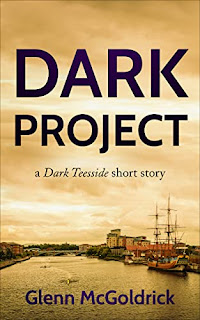Holidays are a good time to catch up on reading – and here are two short works that make some light and dark reading.
What Child is This by Rhys Bowen
What Child is This, a novella by Rhys Bowen, is the story of Jack and Maggie, a young couple who live in London’s East End. It’s Christmas Eve, 1940, the Blitz is on, and German bombers decide to bring an extra Christmas present. Jack and Maggie flee their home when an incendiary bomb is dropped on the block, and they lose everything. She wants to go her sister’s farm in the country, but Jack has to stay near the docks, where he works and is exempted from military duty because of his protected status.
Virtually penniless, then find themselves in London’s West End near Hyde Park, until Jack discovers a nearby home with the front door wide open. The block is deserted, no one’s in the house, so they make themselves at home is what is a very posh place. And then a little boy wanders downstairs and asks if they’re burglars. It’s a Christmas-time story, overlaid by the tragedy of wartime and loss.
Bowen is a bestselling author of more than 40 novels. Her novel The Tuscan Child has sold more than a million copies, and her works have been translated into numerous languages. She’s received several awards for both her mystery books and her historical novels. A transplanted Brit, she lives in California and Arizona.
Dark Project by Glenn McGoldrick
For a darker (and shorter) story, British author Glenn McGoldrick has published his latest story in the Dark Teesside series, Dark Project.
Brian is the type of work colleague who seems to blend into the background. He’s known as “Boring Brian,” and it seems that women don’t find him very interesting, either. He had dated Jane, one of his fellow workers, for a time, but she lost interest or just stopped responding to him.
He follows the news, and he’s currently following the disappearance of a man well-known to police for his drug and assault offences. The police believe the disappearance is gang-related, by Brian knows better. Dark Project is one of those stories that has you looking over your shoulder.
Writing since 2013, McGoldrick specializes in short stories. He’s worked for both land-based casinos and cruise ships for a time, basing many of his stories on those experiences. His stories are dark, gritty, often involve a twist, and inevitably open insights into the human psyche. And his characters run the gamut of good, bad, and something in between, and often find themselves moving far beyond the boundaries of acceptable behavior. He lives in northeastern England.
Related:
“Yellow Feet” by Glenn McGoldrick.
Three New Dark Stories by Glenn McGoldrick.
“Six Down,” “Somewhere in England,” and “Dark Progresion” by Glenn McGoldrick.
4 Stories by Glenn McGoldrick.
3+ Stories by Glenn McGoldrick.
Five Mysteries: 2 Short Stories, 2 Novellas, and a Long Story.
The Dark Stories of Glenn McGoldrick.
Watching Crows by Glenn McGoldrick.





















